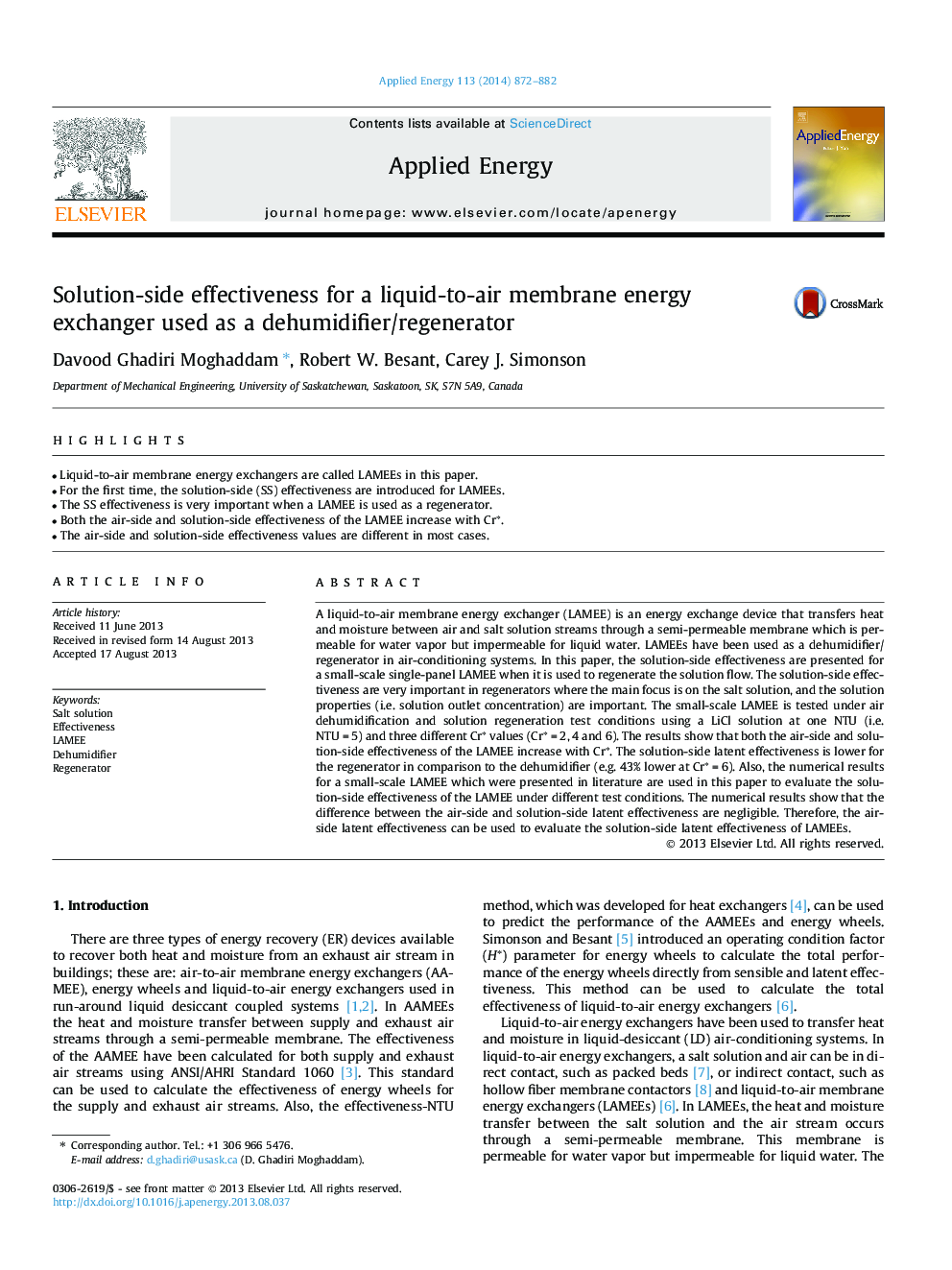| Article ID | Journal | Published Year | Pages | File Type |
|---|---|---|---|---|
| 6692057 | Applied Energy | 2014 | 11 Pages |
Abstract
A liquid-to-air membrane energy exchanger (LAMEE) is an energy exchange device that transfers heat and moisture between air and salt solution streams through a semi-permeable membrane which is permeable for water vapor but impermeable for liquid water. LAMEEs have been used as a dehumidifier/regenerator in air-conditioning systems. In this paper, the solution-side effectiveness are presented for a small-scale single-panel LAMEE when it is used to regenerate the solution flow. The solution-side effectiveness are very important in regenerators where the main focus is on the salt solution, and the solution properties (i.e. solution outlet concentration) are important. The small-scale LAMEE is tested under air dehumidification and solution regeneration test conditions using a LiCl solution at one NTU (i.e. NTU = 5) and three different Crâ values (Crâ = 2, 4 and 6). The results show that both the air-side and solution-side effectiveness of the LAMEE increase with Crâ. The solution-side latent effectiveness is lower for the regenerator in comparison to the dehumidifier (e.g. 43% lower at Crâ = 6). Also, the numerical results for a small-scale LAMEE which were presented in literature are used in this paper to evaluate the solution-side effectiveness of the LAMEE under different test conditions. The numerical results show that the difference between the air-side and solution-side latent effectiveness are negligible. Therefore, the air-side latent effectiveness can be used to evaluate the solution-side latent effectiveness of LAMEEs.
Related Topics
Physical Sciences and Engineering
Energy
Energy Engineering and Power Technology
Authors
Davood Ghadiri Moghaddam, Robert W. Besant, Carey J. Simonson,
